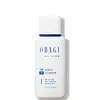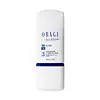What's inside
What's inside
 Key Ingredients
Key Ingredients

 Benefits
Benefits

 Concerns
Concerns

 Ingredients Side-by-side
Ingredients Side-by-side

Water
Skin ConditioningCocamidopropyl Betaine
CleansingSodium Lauroyl Oat Amino Acids
CleansingSodium Laureth Sulfate
CleansingGlycerin
HumectantAloe Barbadensis Sprout
HumectantGlycereth-7
HumectantPrunus Armeniaca Kernel Oil
MaskingPanthenol
Skin ConditioningAcrylates/C10-30 Alkyl Acrylate Crosspolymer
Emulsion StabilisingOleyl Lactate
EmollientEthoxydiglycol
HumectantTriethanolamine
BufferingSalvia Officinalis Extract
AntimicrobialBorago Officinalis Extract
EmollientPhenoxyethanol
PreservativeMethylparaben
PreservativePropylparaben
PreservativeEthylparaben
PreservativeButylparaben
MaskingSaponins
CleansingParfum
MaskingCI 19140
Cosmetic ColorantWater, Cocamidopropyl Betaine, Sodium Lauroyl Oat Amino Acids, Sodium Laureth Sulfate, Glycerin, Aloe Barbadensis Sprout, Glycereth-7, Prunus Armeniaca Kernel Oil, Panthenol, Acrylates/C10-30 Alkyl Acrylate Crosspolymer, Oleyl Lactate, Ethoxydiglycol, Triethanolamine, Salvia Officinalis Extract, Borago Officinalis Extract, Phenoxyethanol, Methylparaben, Propylparaben, Ethylparaben, Butylparaben, Saponins, Parfum, CI 19140
Hydroquinone
StabilisingAscorbic Acid
AntioxidantBHT
AntioxidantButylparaben
MaskingCetyl Alcohol
EmollientDisodium EDTA
Glycerin
HumectantLactic Acid
BufferingMethylparaben
PreservativePhenyl Trimethicone
Skin ConditioningPPG-2 Myristyl Ether Propionate
EmollientPropylparaben
PreservativeSaponins
CleansingSodium Lauryl Sulfate
CleansingSodium Metabisulfite
AntioxidantStearyl Alcohol
EmollientTocopheryl Acetate
AntioxidantWater
Skin Conditioning
 Reviews
Reviews

Ingredients Explained
These ingredients are found in both products.
Ingredients higher up in an ingredient list are typically present in a larger amount.
Butylparaben is a preservative, is a paraben, and is not reef safe. It can be bad for dry skin and worsen eczema.
Glycerin is already naturally found in your skin. It helps moisturize and protect your skin.
A study from 2016 found glycerin to be more effective as a humectant than AHAs and hyaluronic acid.
As a humectant, it helps the skin stay hydrated by pulling moisture to your skin. The low molecular weight of glycerin allows it to pull moisture into the deeper layers of your skin.
Hydrated skin improves your skin barrier; Your skin barrier helps protect against irritants and bacteria.
Glycerin has also been found to have antimicrobial and antiviral properties. Due to these properties, glycerin is often used in wound and burn treatments.
In cosmetics, glycerin is usually derived from plants such as soybean or palm. However, it can also be sourced from animals, such as tallow or animal fat.
This ingredient is organic, colorless, odorless, and non-toxic.
Glycerin is the name for this ingredient in American English. British English uses Glycerol/Glycerine.
Learn more about GlycerinMethylparaben is a preservative and is a paraben. It is used to prevent the growth of fungus, mold, and other harmful bacteria. Parabens are chemicals used as preservatives in both cosmetics and food.
Methylparaben can be synthetically created. It can also be found naturally in some fruits, such as blueberries.
Oftentimes, Methylparaben is combined with other parabens to help increase the shelf life.
The safety of Methylparaben is currently being studied. While ongoing studies are looking into the safety of parabens, the results have been very mixed. Some studies have not found Methylparaben to be harmful.
Learn more about MethylparabenPropylparaben is a preservative and is a paraben with antifungal and antimicrobial properties.
This ingredient can be naturally found in plants and insects, but most of it is synthetically manufactured for human use. In cosmetics, it is usually created by reacting para-aminobenzoic acid and propanol (an alcohol).
You can usually find this ingredient in water-based products.
Parabens have come under controversy due to the claim they are hormone disruptors. Studies show conflicting results. We recommend speaking with a professional if you have any concerns.
Propylparaben is commonly found in food, medicine, and cosmetics.
Learn more about PropylparabenWe don't have a description for Saponins yet.
Water. It's the most common cosmetic ingredient of all. You'll usually see it at the top of ingredient lists, meaning that it makes up the largest part of the product.
So why is it so popular? Water most often acts as a solvent - this means that it helps dissolve other ingredients into the formulation.
You'll also recognize water as that liquid we all need to stay alive. If you see this, drink a glass of water. Stay hydrated!
Learn more about Water